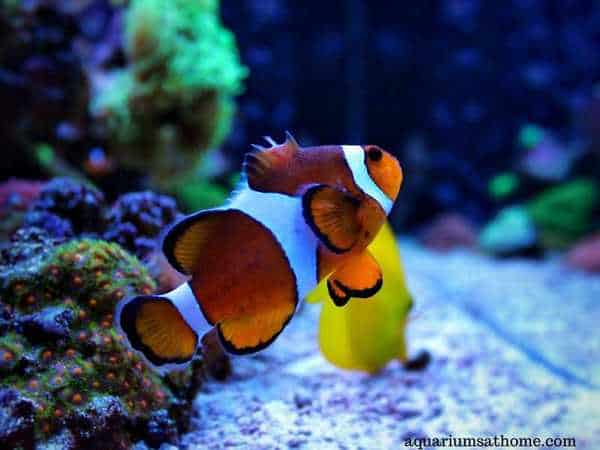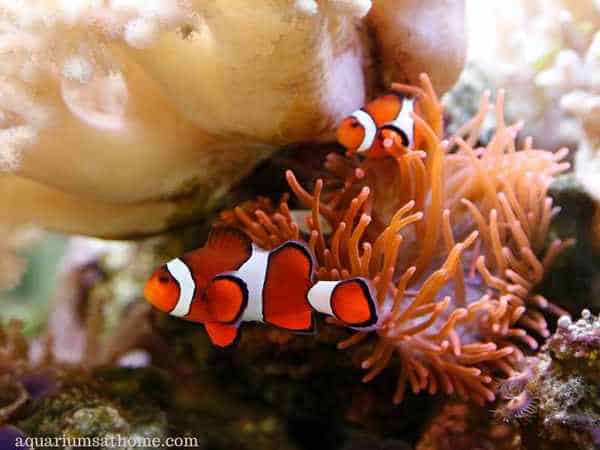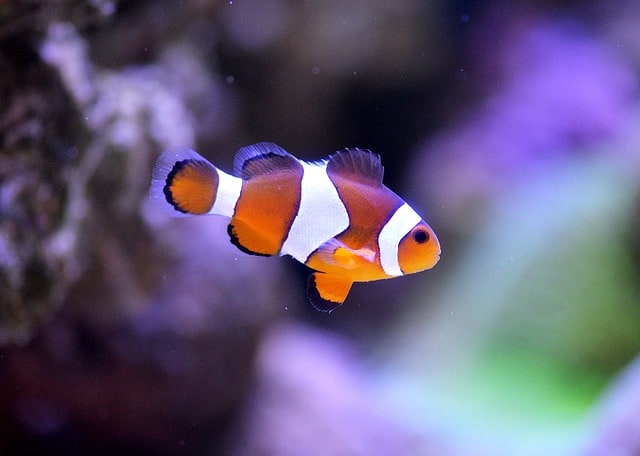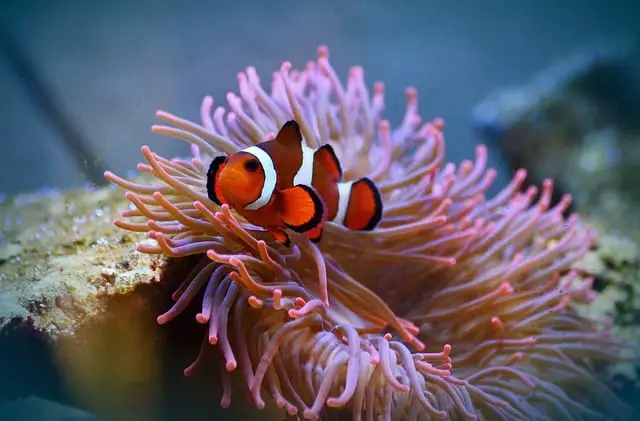Brooklynella is a parasitic infection typically associated with the Amphiprion family of fish, which is why it’s often referred to as ‘clownfish disease.’ These kidney-bean shaped microorganisms are extremely deadly and can quickly wreak havoc on a marine aquarium. As an aquarist, it’s important to know what the symptoms of this infection are and how best to treat it?
Common indicators of brooklynella in clownfish include the sloughing or shedding of skin, furry mucus coating on the gills, lethargy, loss of appetite, and respiratory problems. Treatment must be fast and effective. It typically requires isolation of the ailing fish and administration of antibiotic medication.
Now that you know the symptoms of brooklynella and how to treat it, let’s explore this topic in more detail. Together we’ll learn how to recognize early signs of the disease and how best to eradicate it. We’ll also discover what other fish species are susceptible to this illness and how to prevent it from spreading in a community tank environment.
So, if you’re ready to learn more about clownfish disease and its implications on a healthy, thriving marine tank, then let’s begin!
What is Brooklynella in Clownfish?
Brooklynella is a parasitic disease that plagues marine fish, especially clownfish, in the wild as well as in captivity. B. hostilis attacks the gills causing respiratory problems and eventually an inability to breathe. Death is imminent within days if not treated promptly and effectively.
Where this disease differs from other parasitic infections is that it requires a host fish to survive and multiply. It’s not ‘picky’ in its choice of host and can plague other species of saltwater fish as well including angelfish, surgeonfish, tangs, wrasses, and seahorses.
What Causes Brooklynella in Clownfish?
Brooklynella is caused by a quickly multiplying protozoa covered in cilia that reproduces asexually using binary fission through conjunction. It’s this rapid duplication process that allows it to spread so fast from fish to fish in a contained aquatic environment. On the plus side, brooklynella is a ‘fish only’ disease and won’t harm or infect crabs, snails, shrimps, or corals in a marine tank.
What are the Symptoms of Brooklynella in Clownfish?
The early signs of brooklynella include a fish scraping its body up against a rock or other hard surface, gasping for air at the top of the tank, and a rapid breathing motion. The symptoms that follow typically include lethargy, refusal to eat, loss of coloration, skittish behavior or hiding out, a thicker than usual slime coating, and skin lesions.
As the disease progresses, the slime coating (whitish mucus layer that cover the body and protects the clownfish from anemone stings and parasitic infections) will thicken drastically – starting at the head and then spreading downward towards the tail. Skin lesions will also develop which puts the fish at risk of developing a secondary bacterial infection such as fin rot.
How to Treat Brooklynella in Clownfish?
The best way to treat brooklynella in clownfish is with formalin – a 37% solution of formaldehyde gas dissolved in water with methanol added as a stabilizer. This medication is very strong and should be administered with care. Following the instructions ‘to a T’ is a must otherwise you risk harming your fish.
Begin by mixing the formalin solution at a higher concentration with saltwater and quickly dipping the ailing fish into the liquid. This will help to kill the parasites living on the skin. Next, isolate the fish in a quarantine tank and administer the medication as prescribed.

How to Prevent Brooklynella in Clownfish?
To lessen the likelihood of a brooklynella infestation in your marine tank, make sure to purchase only well-maintained, captive-bred clownfish from a reputable breeder – since this disease is more common in wild-caught clownfish.
Another way to prevent brooklynella is to quarantine new fish in a separate tank for a week prior to introducing them to the main aquarium. This way, if you notice any early signs of the disease, you can eradicate it in advance.
Giving new fish a quick freshwater dip prior to adding them to the main tank is also recommended. Anything you can do to ensure only healthy fish are introduced to your aquarium will go a long way in ensuring the aquatic environment remains safe and disease-free.
Can a Clownfish with Brooklynella Heal on its Own?
Brooklynella is a progressive disease that won’t go away on its own. It must be treated promptly and completely otherwise death is imminent within a matter of weeks. An ailing clownfish should be isolated and then medicated with an appropriate antibiotic such as formalin.
Is Brooklynella the Same as Fin Rot?
While brooklynella can cause significant fin deterioration in infected fish, it’s not the same as fin rot. As opposed to a parasite, fin rot is the result of poor water conditions and stress. It’s indicative of frayed fins or tails, white or black fin/tail tips, red or inflamed patches of skin, sluggishness and hiding out.
Can Brooklynella be Spread to Other Fish?
Brooklynella is a highly contagious disease that can easily spread from fish to fish in a community tank environment. Quick acting and deadly, this illness can be detrimental to the health and longevity of all fish, not just clownfish.
How Long does Brookllynella Stay in a Tank?
Brooklynella will remain in a tank as long as there’s a viable fish host to feed off of. The only way to eradicate it is to treat the infected fish in a quarantine tank and allow the main tank to go fishless for 6 weeks. Do no reintroduce the fish until medicated completely and no signs of the parasite remains.

How to Setup a Quarantine Tank to Treat Brooklynella in Clownfish?
To setup a quarantine tank for clownfish suffering from brooklynella, follow the instructions listed below:
- Pre-clean and disinfect a 10-gallon aquarium.
- Add a heater, filter (without charcoal), and aquarium light.
- Fill the tank with half pre-treated, conditioned water and the other half with water from the main tank – this will help ensure the temperature, pH, and salinity are condusive.
- Add the correct amount of formaldehyde medication to the tank – follow the instructions provided with the antibiotic carefully and completely.
- Add the ailing fish to the quarantine tank – observe the aquarium carefully for the first few days and watch for signs of both progression and regression.
Note: as a marine aquarist, it’s recommended that you always have a quarantine tank set-up and running. Not only is it handy for when you need to isolate sick or aggressive fish, but it also helps with acclimating any new additions prior to their introduction to the main tank.
For more information, please refer to this article.
Final Thoughts
To conclude, brooklynella or ‘clownfish disease’ is a parasitic infection and indicative of shedding skin, mucus buildup on gills, inactivity, refusal to eat, and difficulty breathing. It must be treated quickly and completely to prevent further infestation and death of marine tank inhabitants. Isolation of the ailing fish and treatment with antibiotics such as formalin are a must.
I trust you’ve found this article to be both interesting and informative. Thanks for reading and good luck with your aquarist hobby!
Recommended Posts
Why is My Clownfish Losing its Color?
What Happens if a Female Clownfish Dies?
How Do You Tell if Clownfish are Fighting?
Clarkii Clownfish Care Guide and Tank Setup (Behavior, Breeding, Tank Mates, etc.)






